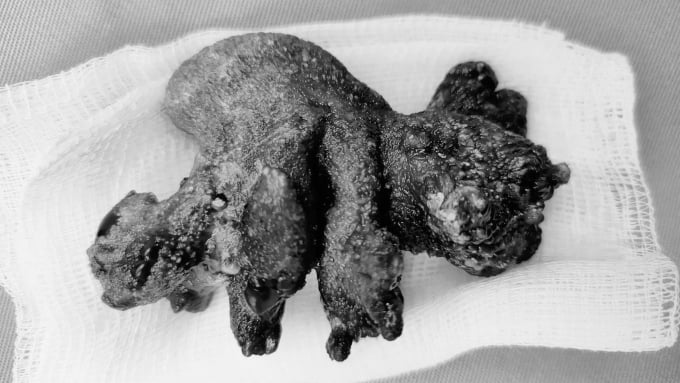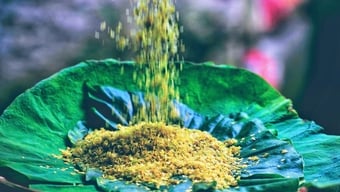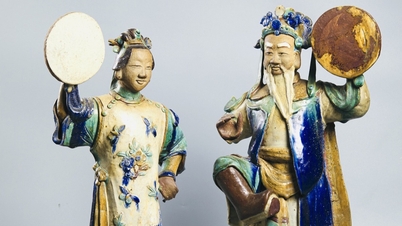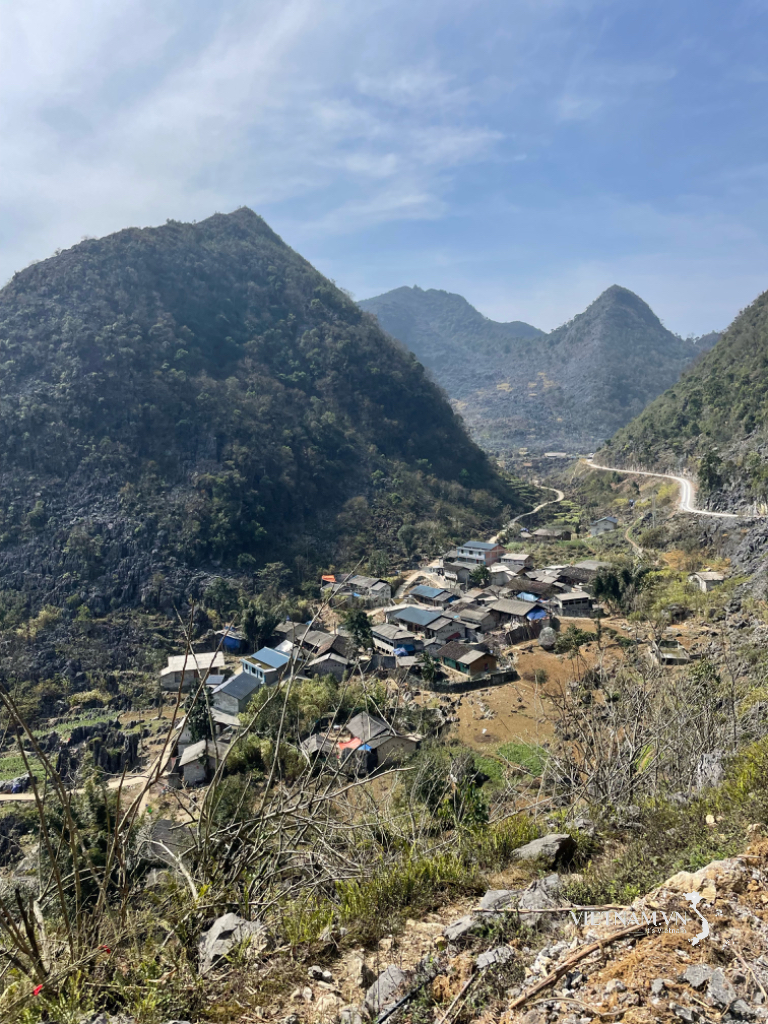Quang Ninh , a 65-year-old male patient was hospitalized due to severe abdominal pain. Doctors discovered a large kidney stone, nearly 7 cm long.
On July 31, Dr. Nguyen Nhu Trung, Department of Urology and Nephrology, Vietnam - Sweden Uong Bi Hospital, said that the patient had a stone as big as a ginger root, with complex branches.
After two hours of intervention, the surgical team completely removed the rough coral stone, preserving kidney function. "The intervention was difficult, just a small mistake could cause the patient to bleed, or even have the kidney removed," the doctor said.
Coral stones have a special shape, thorny like coral trees. The process of stone formation often progresses silently, without symptoms. When coral stones are large in size, the patient has symptoms of dull, persistent back pain, may have frequent urination or bloody urine. If left untreated, coral stones will impair kidney function due to hydronephrosis, infection...
For large stones, doctors must intervene such as lithotripsy or surgery to remove them, help reduce symptoms, and restore normal urine flow. After kidney stone treatment, patients need to have a healthy diet, drink more than two liters of water a day, and have regular check-ups to detect recurrence of kidney stones or complications and sequelae.

Large kidney stone in a patient. Photo: Provided by the hospital
Doctors recommend that people with lower back pain or bloody or painful urination should see a doctor and not self-medicate at home. Renal ultrasound and abdominal X-ray are basic paraclinical methods to help detect urinary tract stones.
If detected late, stones will destroy and cause loss of kidney function, causing recurring kidney infections, even severe infections and death.
Minh An
Source link






































![[Photo] "Ship graveyard" on Xuan Dai Bay](https://vphoto.vietnam.vn/thumb/1200x675/vietnam/resource/IMAGE/2025/11/08/1762577162805_ndo_br_tb5-jpg.webp)




![[Video] Hue Monuments reopen to welcome visitors](https://vphoto.vietnam.vn/thumb/402x226/vietnam/resource/IMAGE/2025/11/05/1762301089171_dung01-05-43-09still013-jpg.webp)


































































Comment (0)